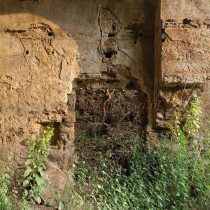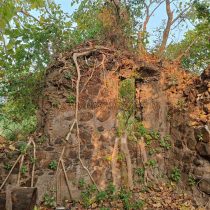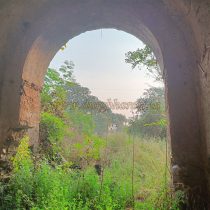JALSAR KOT
TYPE : COASTAL FORT
DISTRICT : PALGHAR
HEIGHT : 0
GRADE : EASY
Due to Bombay, the Konkan region is divided into two parts namely North Konkan and South Konkan. The stretch from Vasai to Daman is known as North Konkan and the stretch from Alibaug to Karwar is known as South Konkan. As the Portuguese ruled North Konkan for a long time, they built many small forts along the coast for the protection and administration of this area. Most of these forts have been extensively eroded and very few remnants remain. Fort in Jalsar village near Vaitarana Bay mouth is one of them. Safale railway station of Western Railway is the nearest place to visit Jalsar Fort and the distance from the railway station to Jalsar is about 8 km. Buses and rickshaws are available to go to Jalsar village. As this fort is completely unknown to the locals, one should explore this fort with sufficient information.
...
Jalsar village is on the main road and after entering the village you see the Bhavani temple. After crossing this, when you come forward, there is a Chinese restaurant on the left. Behind this eatery are the ruins of Jalsar Fort. Only a few remnants of this fort, once spread over 1.5 acres, can be seen today. The structure seen now in Fort must be the place of stay of previous times in this Fort. This building has two halls and the main hall has a large arched door. There is an arched rectangular niche in the wall in front of this door and another small arched door to enter in the left wall of the hall. In the right wall is another small door leading to another hall. Rough stone and lime are used in the construction of this building and the inner walls are plastered with lime. While walking around the premises of this structure, one can see the foundation of the ramparts and the remains of some walls. Looking at this whole area, it is seen that this structure was very big during its prime time and there are ramparts around it. At a distance from this building, there is a Portuguese-era well and its water is still in use today. It cannot be said with certainty whether this place is a Fort or tax collection office, but considering the location and size of the structure, this Fort must have been used as a tax collection center for the excise during the Portuguese period. There should also be some habitation here. Half an hour is enough to see the fort. Built by the Portuguese in the 16th century, the main purpose of these type of forts was to protect the waterways and provide necessary logistics to small and large forts in the province. Using all these small forts, watchtowers and long-range cannons, the Portuguese established their empire along the North Konkan sea route. During the Vasai campaign of 1739 AD, this area came under the control of the Marathas and the Portuguese fled this area forever. If you want to see the Portuguese watch post on the sea trade route and its geographical importance, you must visit this place.
© Suresh Nimbalkar

















